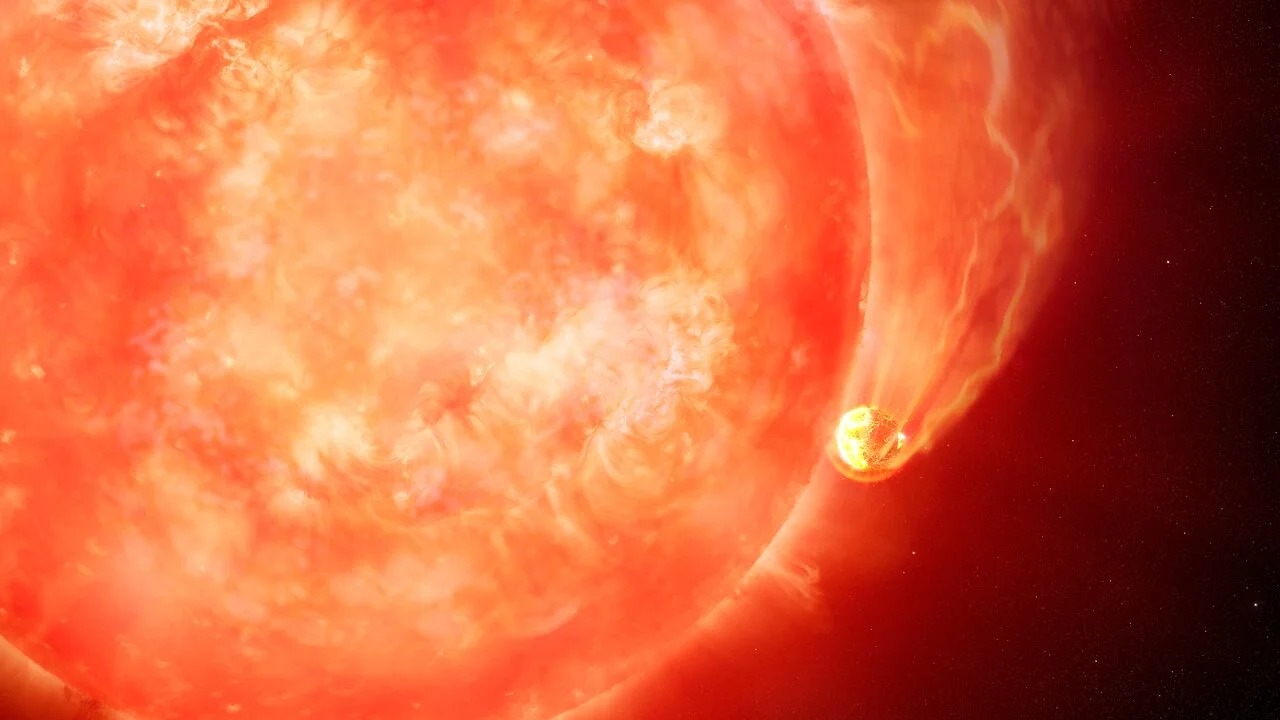Recently, astronomers saw the horrific sight of an exoplanet being swallowed up by its mother star. This allowed scientists to see what would eventually happen to the Earth when the Sun began to die.

A sun-shaped star located in our galaxy, about 12 thousand light-years away from us, has turned into a red giant – the last stage in the life of a star. As it grows, it expands outward, so that the star has absorbed a planet the size of Jupiter orbiting it. Researchers were able to see this catastrophic event due to the characteristic increase in the brightness of the star. This event is very similar to what will eventually happen to our Sun.
Observing this event, the first of its kind, required the use of several astronomical instruments. The initial bright flare caused by the planet being pulled into the star’s atmosphere was observed by the Zwicky Transient Facility at Palomar Observatory in California. It watches the sky in search of short, fleeting events. Then astronomers used data from NASA’s Near-Earth Object Wide-field Infrared Survey Explorer mission to examine the event in the infrared range, where they saw an extremely fast and bright flare quickly extinguished.
They also used the Keka Observatory and the Gemini South telescope to observe a long-term low-energy event and confirm that the flare was indeed caused by a star swallowing the planet.
“We see the future of the Earth. If some other civilization were watching us from a distance of 10 thousand light-years, they would see how our Sun absorbs the Earth: our star suddenly becomes brighter, and then forms dust around itself,” said the study’s lead author Kishalay De from the Massachusetts Institute of Technology (MIT).
The discovery shows what possible detailed observations, thanks to super-sensitive telescopes, are able to capture short-term events that can last only a few weeks.
Earlier we reported on when the Sun would break out.
The study is published in the journal Nature
Follow us on Twitter to get the most interesting space news in time
https://twitter.com/ust_magazine

